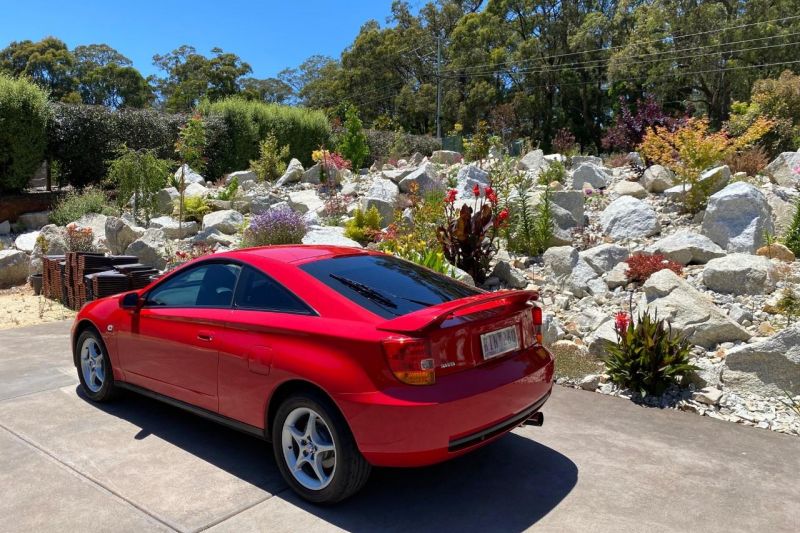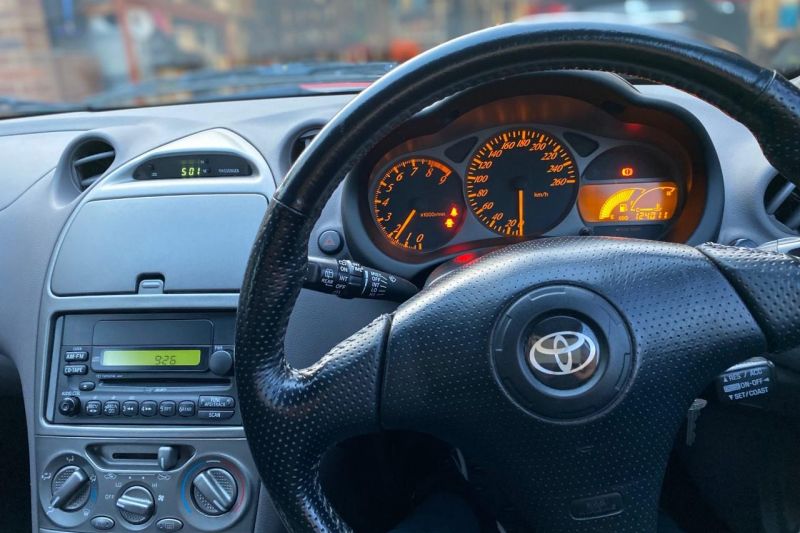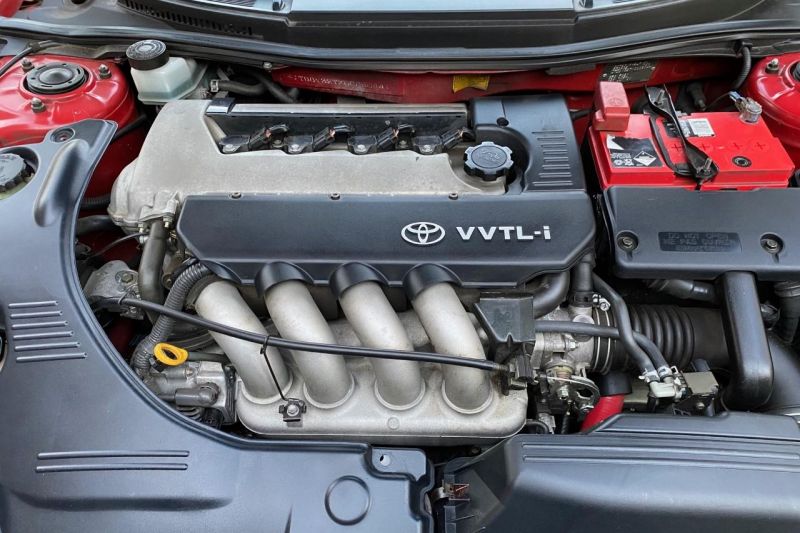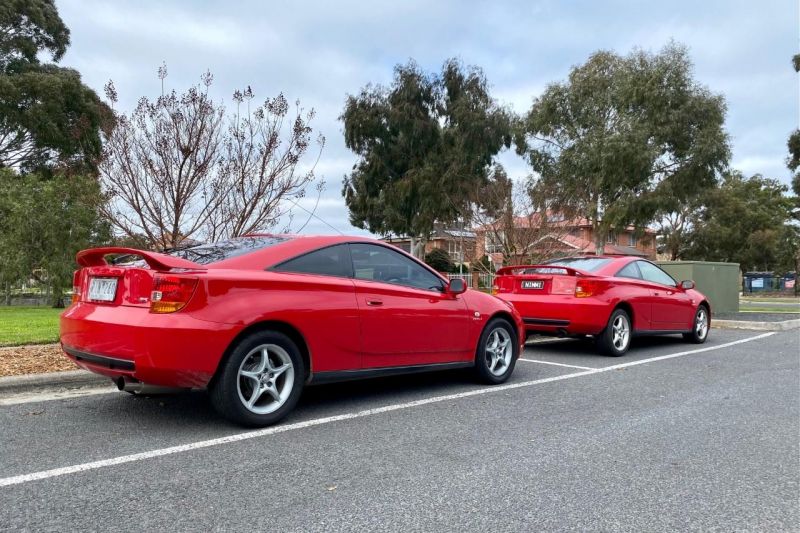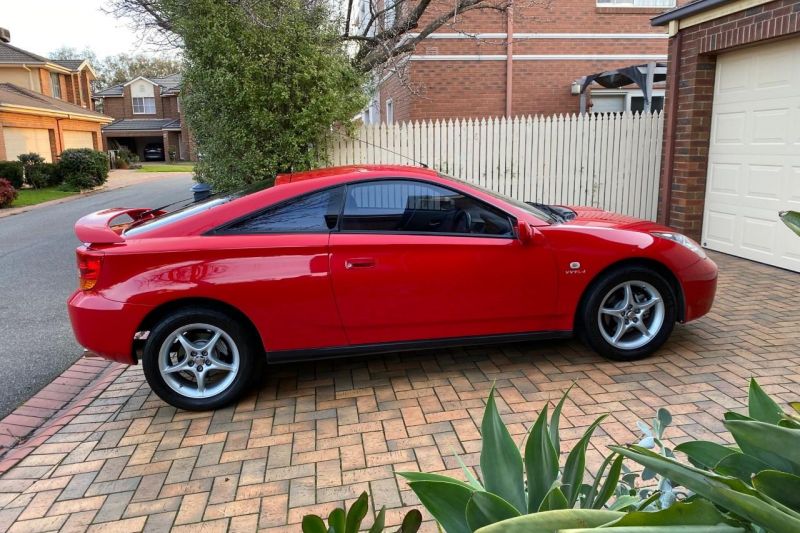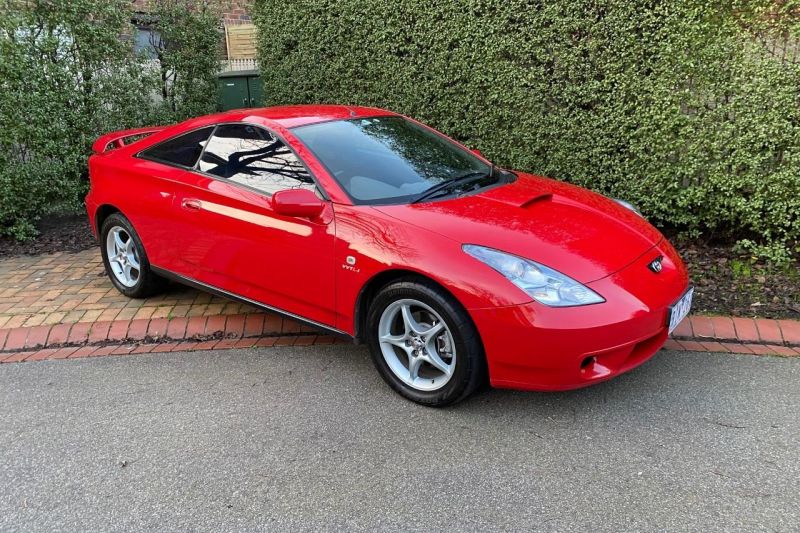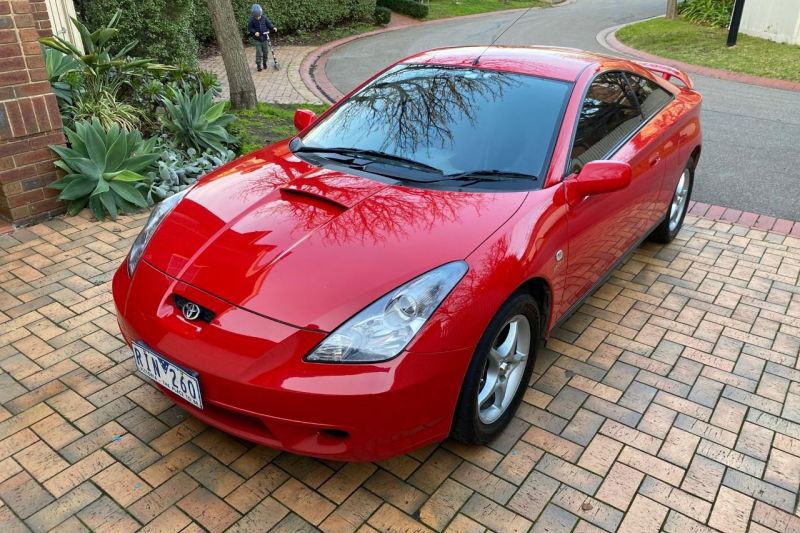About the Toyota Celica
s k purchased this Toyota Celica used for $4950 (including all on-road costs) in 2019. s k would buy this car again because: “Great value for money. Looks better today than it did in 2001. It’s a Toyota, so it’s built to last. It’s not expensive to run and maintain. Slowly becoming a classic and will soon be eligible for club registration. I enjoy driving it.”
How reliable has your car been? Tell us about any issues.
Totally reliable, then again I service it often, i.e. every 4000-5000km.
In terms of issues, I have had none. It is easy to access the main filters and drain plug. The car has a timing chain and spark plugs last for years.
As the months went by the car gradually became a dependable friend. It stayed true to the Toyota mantra of reliability. Cold mornings, heavy traffic, spirited back road drives and dropping the kids to school are done without fuss. Every time I turn the key (yes… no push button here), the engine jumps to life and settles into an old school high rpm hum to help itself warm up.
These cars are also known to suffer from oil pump/engine failures for those who dare to over-rev heavily on a down shift. Apparently lift bolts in the rocker arms also fail causing VVTL-I to not engage. Currently I have not suffered any of these issues and neither has any owner I have bumped into with this specific car.
What do you think of the ownership experience with your car?
I bought my car with 109,000km on it and subsequently have driven over 20,000 trouble-free kilometres with it.
Despite being front-wheel drive it has a sporty nature about it whilst still being practical. So far I am exceedingly happy and would like to get another to set up for track use.
The ownership experience of this car has been excellent. The odd person in traffic gives it the thumbs up. Surprisingly I spotted another red one at my local IGA and I decided to take a few pics of mine parked directly behind it.
Feeling like I had captured a rare event, a third Celica appeared from nowhere making a hat trick as all three owners proudly stopped and chatted.
Are you happy with the price and features of your car?
At under $5000 on the road this car was a steal at the time of purchase. In terms of features, this model is the base and is fairly basic. If I buy another I would like to get the ZR with ABS and a sunroof.
What do you think of the performance and economy of your car?
The performance/economy equation is excellent for this car. It averages around 8.0L/100km around town while on the highway flat 6.0s are the norm. In terms of performance, once the engine is revved past 6200rpm it really comes alive when Toyota’s version of VTEC kicks in.
On the day I collected the car my perception of this vehicle was that I was going to need to be ‘on it’ to go anywhere. I imagined that I would be flat footing the accelerator relentlessly to maintain forward progression. The raw numbers and my mental perception of how it would drive were totally misaligned. From the moment I engaged first gear and drove off my brain underwent a software update and reboot.
The engine felt eager at all revs and the torque hole that I imagined would swallow me up failed to bite. The on-paper stats did not reveal the full narrative. It took off effortlessly and barely needed any throttle to get going or maintain speed.
The drive home upon purchase was uneventful, I did not notice the lack of torque, the lack of rear-wheel drive, or the dribble of coolant from the radiator. The car made it home without needing a tow truck. All pluses for the start of this new relationship. With its red duco gleaming I could not wait to go for some weekend drives to hear the 2ZZ-GE soundtrack playing a remake of classic VTEC hits.
A major selling point for me was the six-speed gearbox. Like me, you would imagine the gears would be stacked close for some fun – spoiler alert, not so. First and second are super low and help the car ride along its burst of energy off the second cam profile when you are on it. Slip into third and party time is paused momentarily unless you are willing to rev the car to the limiter in second.
Otherwise, the shift to third pulls the rpm below the ‘VTEC’ zone meaning you’ll have to wait for the engine to gather itself back up the tacho before things get interesting again.
At first, this might appear to be a tragic flaw for those who live in the red zone of the tach. For me, I’m rarely buzzing the car this hard and would prefer to cruise than abuse. What I do like about the ratios is how they are pulled back to hide the torque deficit of the 2ZZ engine.
First gear is super low and requires almost no touch on the throttle to get the car going. From there I often short shift to third then fifth around town which holds around 2000rpm at 60km/h with ease. 100km/h in sixth gear has the crank spinning at 3000rpm. Here the engine becomes almost silky smooth. Compared to modern cars, 3000rpm at freeway speeds seems awfully high but the car laps it up with ease.
When filling up, the little label inside the fuel flap demands you add 95 octane unleaded because this engine runs an 11.5:1 compression ratio. I run 98 to keep the car happy and am pleased to get 7-9.0L/100km around town whilst open road cruising yields flat sixes.
What do you think of the technology in your car?
One rung above a model T Ford… my toaster has more tech! The original sound system comprises of a single CD slot and AM/FM radio. Navigation is driver dependent.
Fortunately I can mount a smart phone in many locations around the cabin to lift its tech.
Behind the wheel it becomes immediately apparent the steering wheel is from another era in time. It is relatively thin compared to today’s thick, button-infested items. Mine has just one button – the horn.
Infotainment follows suit consisting of a single CD slot, a radio and the odd button around the cabin that can be pressed to make the windows go up and down. Not to mention a button on the handbrake too, which is still a lever and fulcrum situation.
Visibility in this car is better than acceptable considering its sporting nature. The windscreen is large and steeply raked giving a panoramic view of what lies ahead. The door glass is also expansive and vision out the rear is fine. The spoiler is about the right size… not too big to obstruct all of your view but big enough to provide you with a constant reminder that you are driving a coupe.
What do you think of the ride comfort and handling of your car?
Superb… this car manages to ride over bumps without being terse whilst maintaining an excellent flat cornering stance.
Surprisingly capable over ‘B’ roads as the tyres have some aspect to their profile that cushions road imperfections with ease. Cannot complain at all.
Sawing on the wheel it was apparent that this car changed direction with some enthusiasm. It corners flat and resists understeer overwhelmingly well. The suspension offers a plush ride for a car of this nature whilst maintaining a surprising amount of road purchase when pushed.
Do you have any additional comments about your car?
Why the Celica? This is the 7th generation Celica and was the last of the breed. It represented a big deviation from previous models in that engine capacity and weight were both reduced. The engine was its big-ticket item, the 2ZZ-GE made a 100bhp per litre naturally aspirated.
When the crank is spinning at 7600rpm Toyota claimed it made a 180bhp or 140kW of power. Torque was less impressive at 180Nm which maxed out at 6800rpm. These figures suggest it might be hard to live with as its peak operating range was both narrow and stratospheric, but after few years of ownership and around 20,000km under my backside, I have the following news to share.
Firstly, this car is light, around 1120kg. It’s ‘wrong’ wheel drive, has three pedals, two very long doors, and is independently sprung all round. It has seatbelts for four, but two might need to have their legs missing to get comfy in the back. It features power windows/steering, heating/AC and two potentially fatal airbags (thanks Takata). This specific model has no ABS, no stability or traction control. It has a Toyota badge but runs a Subaru stud pattern. The wheel arch gap is reminiscent of a Mitsubishi Triton and the bonnet scoop feeds air to nothing.
The capacious boot contains a full-sized spare that might be the doppelgänger to a space saver. Disc brakes exist at each corner and look like they’d be overwhelmed to stop a big pram… Perusing the facts might cause you to run, laugh or not care at all, is this car relevant today?
Reflecting on history, the Toyota Celica has had its moments to shine. Some models were a recipe for lust, appreciation and classic car status, other models in the line-up varied in their popularity and effort to enthuse. For me, this iteration was an affordable option that appears cooler now than it did over two decades ago. Its low price to ownership, performance potential, unique styling and fun factor drew me in.
Standing beside the car, it is clear that this particular Celica is melanoma free. The paint and trim look fantastic considering its age. The edgy design has some visual presence and lacks the conformist look present in modern cars. It’s not a boring car to look at, nor is it amazingly beautify either. The front end looks vaguely familiar to that of a Ferrari 575 of the same era with its centralised bonnet scoop.
Prior to purchase, this Celica was a car that I never took seriously, and I imagine you follow me on this too. A front wheel drive car always lacks the purity of a true RWD sports car. Having no torque and needing a ridiculous amount of revs to generate meaningful shove are not the most appealing virtues.
That said, these qualities work well for me in 2022. With an abundance of speed cameras and reduced limits hiding everywhere, this car suits me to a tee. It can feel fast and furious for a moment in time and allow for a modicum of fun without too much fear of breaking the law.
Speaking of fun, despite its age, and mine, we both have a good time together.
Is this car relevant today? Yes, I believe this car has some relevance as a low-cost option to those priced out of owning a Honda Civic Type R from the same era. Buying the seventh-generation Celica will get you close to the feeling derived from a Type R on song without the huge price point.
Have there been any negatives? Yes of course… nothing is perfect.
Firstly, the heater and air-con are not as good as those found in current cars. The heater takes forever to warm the cabin and if I use the AC, both fuel consumption and performance are impacted noticeably. Getting in and out of the car can be a chore after a long day due to its low-slung nature.
The cupholders in the centre console are positioned almost directly under my elbow, meaning they only work well when you are not driving. The steering wheel has no reach adjustment and getting comfortable in the driver’s seat takes a few goes after moving the seat to let someone enter or exit the rear.
Overall, this is not a single focussed machine but rather a GT car with some hidden talent. It has Toyota reliability on its side and potentially a remake planned for the future as the Celica Trademark has been recently rebooted.
If you choose to buy one I’m sure you’ll be pleased and who knows, I might see you at IGA too




